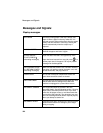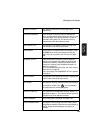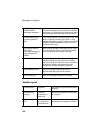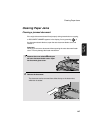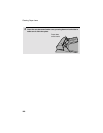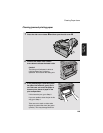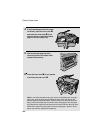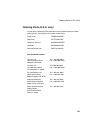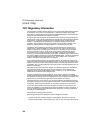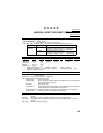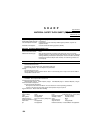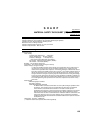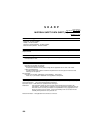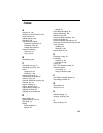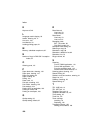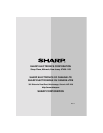
155
S H A R P
Date Revised :
Date Issued :Sep. 16, 2004
MATERIAL SAFETY DATA SHEET (3/4)
MSDS No. B-1021
Section 10. Stability and Reactivity
Stability: Stable except above 200°C (392°F).
Hazardous Reactions: Dust explosion, like most finely divided organic powders.
Conditions to avoid: Electric discharge, throwing into fire.
Materials to Avoid: Oxidizing materials.
Hazardous Decomposition Products: CO, CO
2
, and smoke.
Hazardous Polymerization : Will not occur.
Section 11. Toxicological Information
Health Effects from Exposure: No symptoms expected with intended use.
Toxicological Data
Acute Toxicity:
Ingestion(oral), LD50(mg/kg) : >2000 (Rat) *
Dermal, LD50(mg/kg) : No data available
Inhalation, LD50(mg/l) : >1.93 (Rat, 4hour) *
(This was the highest attainable concentration.)
Eye irritation : Slight conjunctival irritation (Rabbit) *
Skin irritation : Non irritant (Rabbit) *
Sensitizer : Non sensitizer (Guinea pig)
Local Effects : See Chronic Toxicity or Long term Toxicity
Chronic Toxicity or Long term Toxicity :
In a two-year inhalation study of chronic toxicity and carcinogenicity using a typical toner in
rats, there were no lung changes at all in the lowest exposure level (1 mg/m
3
), the most
relevant level to potential human exposures. A minimal to mild degree of fibrosis was noted in
22% of the animals at the middle exposure level (4 mg/m
3
), and a mild to moderate degree of
fibrosis was observed in 92 % of the rats at the highest exposure level (16mg/m
3
). The lung
changes observed in the higher exposure groups are interpreted in term of ìlung overloadingî,
a series of generic responses to the presence of large quantities of respirable, insoluble and
relatively benign dusts retained for extended time periods in the lungs. Lung tumor frequency
was unchanged among rats exposed to toner at the three exposure levels, and for air-only
control rats.
Carcinogenicity
IARC Monographs: Not listed
NTP(USA): Not listed
OSHA Regulated(USA): Not listed
In 1996 the IARC reevaluated carbon black as a Group 2B carcinogen (possible human
carcinogen). This evaluation is given to Carbon Black for which there is inadequate
human evidence, but sufficient animal evidence. The latter is based upon the
development of lung tumors in rats receiving chronic inhalation exposures to free carbon
black at levels that induce particle overload of the lung. Studies performed in animal
models other than rats have not demonstrated an association between carbon black and
lung tumors. Moreover, a two-year cancer bioassay using a typical toner preparation
containing carbon black demonstrated no association between toner exposure and tumor
development in rats.
Mutagenicity : Negative * (AMES test)
( * = Based on data for other products with similar ingredients)



